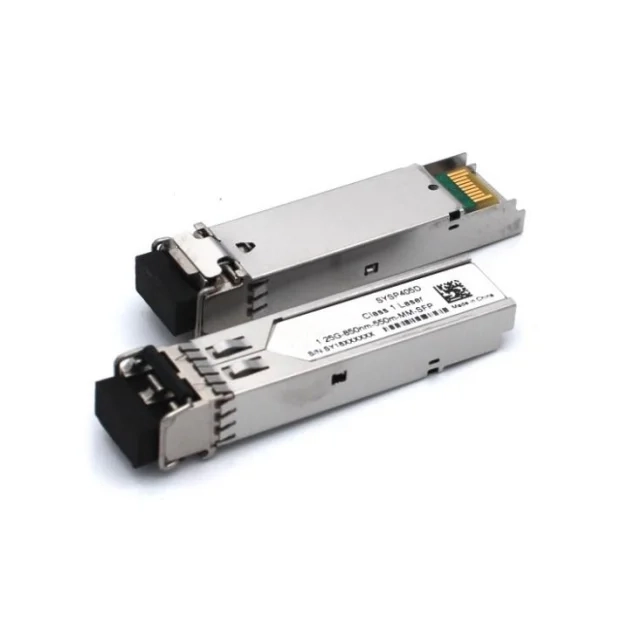In the construction of modern communication networks, optical modules play a vital role. Especially in scenarios where long-distance transmission is required, choosing the appropriate optical module is crucial to ensuring signal quality, transmission efficiency, and cost control. This article will delve into the selection of optical modules for long-distance transmission, from basic concepts to technical details to practical application cases, providing readers with a comprehensive guide.
First, we need to understand the basic functions of optical modules. An optical module is a device in an optical fiber communication system responsible for converting electrical signals into optical signals, or conversely, converting optical signals into electrical signals. This conversion process is achieved using lasers or photodiodes. According to different transmission requirements, there are many types of optical modules, including single-mode optical modules, multi-mode optical modules, parallel optical modules, and serial optical modules.

In long-distance transmission, single-mode optical modules are the first choice due to their smaller core diameter and lower transmission loss. Single-mode fiber allows light to pass through only one mode (i.e., one path), which minimizes modal dispersion and allows signals to remain clear over greater distances. In contrast, although multi-mode optical modules are lower in cost, their transmission distance is limited by modal dispersion and is usually only suitable for short-distance transmission.
Next, we discuss wavelength selection. The wavelengths of optical modules usually include 850nm, 1310nm, 1550nm, etc. Among them, the 1550nm wavelength is widely used for long-distance transmission because it has the lowest fiber loss and smallest dispersion. In addition, the 1550nm wavelength is also used in DWDM (Dense Wavelength Division Multiplexing) technology, which can transmit signals of multiple wavelengths simultaneously on a single optical fiber, greatly improving the data transmission capacity of optical fiber.
Considering the signal attenuation problem in long-distance transmission, it is also very important to choose an optical module with high power output. High-power optical modules can provide stronger signals to overcome losses during transmission and ensure that the signal still has sufficient strength when it reaches its destination. However, too high power may also cause fiber nonlinear effects, so a balance needs to be found between power and nonlinear effects.
In addition to hardware selection, long-distance transmission also needs to consider the compatibility of optical modules. For example, optical modules from different vendors may have differences in temperature range, size specifications, or power requirements. Therefore, when selecting optical modules, you must ensure that they are compatible with existing equipment and can work stably under specific environmental conditions.
In practical applications, a typical case is the transoceanic optical cable system. These systems usually involve transmission distances of thousands of kilometers and require the use of high-performance single-mode optical modules and advanced modulation technologies such as QAM (Quadrature Amplitude Modulation) or DPSK (Differential Phase Shift Keying) to improve spectral efficiency. In addition, in order to compensate for signal attenuation during long-distance transmission, these systems also use optical amplifiers such as EDFA (erbium-doped fiber amplifier) or Raman amplifiers to enhance the signal.
Finally, with the deployment of 5G networks and the development of the Internet of Things, there is an increasing demand for long-distance high-speed transmission. This requires the optical module to not only support long-distance transmission but also have high-speed transmission capabilities. In order to meet this demand, 400G, 800G or even higher-rate optical module products have appeared on the market. These products use complex modulation technology and multi-wavelength multiplexing technology to achieve extremely high data transmission rates on a single fiber.
To sum up, the selection of optical modules for long-distance transmission is a complex decision-making process, involving many aspects such as optical module type, wavelength, power, compatibility, and speed. The right choice not only ensures transmission reliability and efficiency but also reduces costs in long-term operations. With the continuous advancement of technology, future optical module products will be more efficient and intelligent, providing more possibilities for long-distance transmission.
Optical modules application guide: 7 key considerations to ensure smooth communication
The relationship between optical module power and optical communication performance
Core components of optical modules and their role in optical communication systems
Transmission rate and transmission distance of optical modules
Analyze the importance of performance parameters of optical modules in optical communication systems
Optical module heat dissipation design: key technology to ensure performance and lifespan
Optical module packaging form and size standards
Explore optical module compatibility issues
Application and technical requirements of optical modules in 5G communications
Why optical modules can solve network delay problems
How do optical modules improve data center performance and efficiency?
Market demand analysis of optical modules
How to check whether the optical module is damaged?
Do you know the safe use and protective measures of optical modules?
Optical module purchasing guide
mia
coco.li@fineconn.cn
